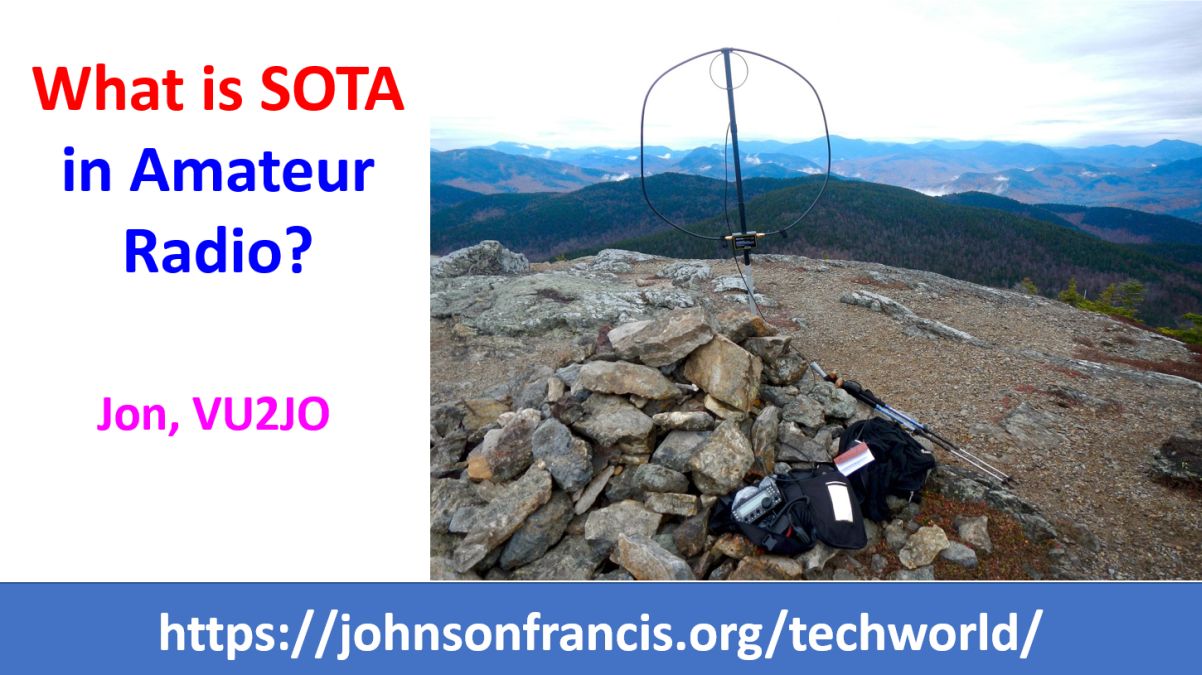What is SOTA in Amateur Radio?
What is SOTA in Amateur Radio?
SOTA stands for Summits on the Air and is an award scheme which encourages radio amateurs to have portable operations from mountainous areas. SOTA has been designed to make participation possible for hams as well as shortwave listeners. After all, shortwave listening is the stepping stone to amateur radio. In fact I was an SWL for quite a long time before I could appear for the examination and become a Ham Radio operator.

Those who ascend the summits and operate are called activators as in Parks on the Air. The name corresponding to hunters in Parks on the Air is chasers, who operate from home, a local hilltop or even activators on other summits. There are awards for activators and chasers.
SOTA is operational in about hundred coutries worldwide, with an association in each country which defines the recognised SOTA summits there. Score for activators and chasers is related to the height of the summit. Prestigious trophies are known as Mountain Goat and Shack Sloth, while certificates are there for various scores. Online SOTA database maintains the Honour Roll for activators and chasers.
An interesting aspect of the SOTA guidelines is the necessity to be compatible with other moutain users. Specific mention is there that activators must not cause any damage to the environment. Due consideration should be given to other people on the hills. Excessive noise, and unsightly appearances of antennas and equipment has to be avoided.
Typical activation will have only one or two persons and will be less than one and half hours. Headphones are strongly recommended to avoid noise pollution. SOTA rules allow operation within 25 meters vertically of any summit so that it is possible to set up the station unobstrusively and out of the wind.
There are Radio Quiet Zones at various regions of the world to protect sensitive radio services like Radio Astronomy. The equipment there have high sensitivity receivers which are often cryogenically cooled. These high sensitivity receivers are susceptible to interferences and hence nearby transmissions are not allowed. SOTA operators have to consider this also before activation.